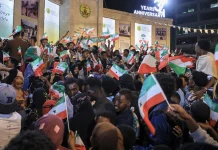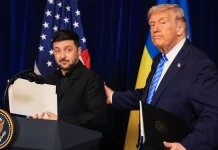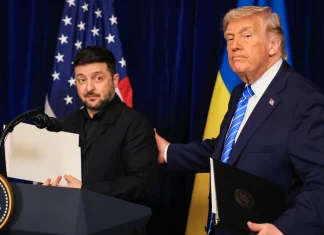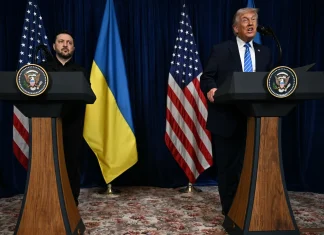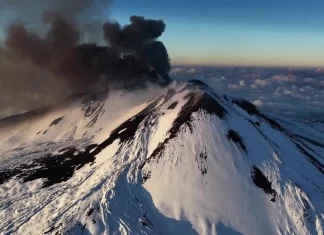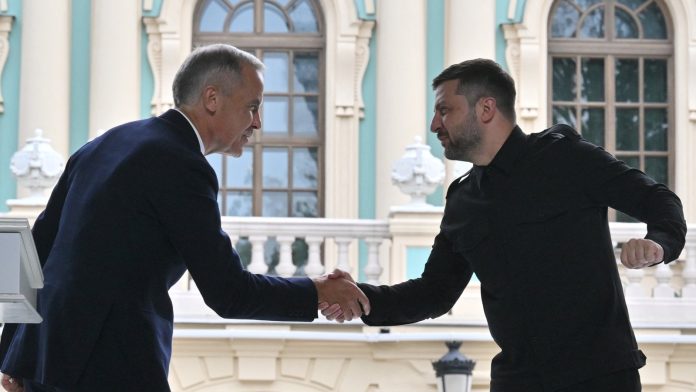
Ukraine’s Independence Day: A Luminous Beacon Amidst Shadows of War
On a bright late summer day in Kyiv, as the sun cast golden hues over the historic Sophia Square, Ukrainian President Volodymyr Zelensky delivered a message that resonated far beyond the echo of artillery and drone strikes. Marking the 33rd anniversary of Ukraine’s independence, carved out of the ashes of the Soviet Union, Zelensky stood not just as a leader but as a symbol of resilience, hope, and unyielding determination.
“This is how Ukraine strikes when its calls for peace are ignored,” Zelensky said, his voice steady but fierce, addressing a crowd gathered to honor the soldiers who had fallen and those who still fought on the front lines. In a world weary of endless conflict, this Independence Day was unlike any other. It was born of blood and fire and whispered the urgent question haunting millions: can peace be brokered in a war that has dragged on for over four years?
A Ceasefire on the Horizon? Zelensky’s Bold Call for Dialogue
In the midst of celebrations, Zelensky made a statement that startled many: he called for a direct bilateral summit with Russian President Vladimir Putin — a meeting he described as “the most effective way forward.”
“Negotiations between leaders—face to face—offer the real path towards ending this nightmare,” Zelensky said, casting aside the broken diplomatic channels and stalled efforts from international intermediaries. His words came on the heels of recent setbacks: despite an earlier push by then-US President Donald Trump to arrange peace talks, Russia flatly dismissed any immediate summit, branding these overtures as unrealistic and premature.
On the Russian side, Foreign Minister Sergei Lavrov criticized what he termed Western obstructionism, accusing the West of hunting for excuses to sabotage talks. Lavrov didn’t hold back in his rebuke of Zelensky’s apparent insistence on “demanding an immediate meeting at all costs.” Yet, Zelensky remained undeterred, vowing resolutely, “We will push Russia to peace.”
The Stark Reality: Conflict’s Grim Toll and Tenacious Territory Battles
Behind the rhetoric, the grim reality on the ground remains stark. Tens of thousands of lives have been lost, and the war has morphed into a grinding stalemate in several contested regions, particularly in eastern Ukraine’s Donetsk province.
Yesterday, Russian forces declared they had captured two villages, seizing critical ground. Ukrainian commanders, however, claim to have reclaimed three others, underscoring the deadly tug-of-war over this strategic area. Oleksandr Syrsky, Ukraine’s commander-in-chief, described the situation with measured optimism, yet it’s clear the frontlines are volatile and constantly shifting.
Civilians on both sides endure the brunt of the violence. Just this week, a ballistic missile and a barrage of Iranian-made Shahed drones reportedly struck Ukrainian territory, killing a 47-year-old woman in Dnipropetrovsk. In retaliation, Ukraine launched its own drone strikes deep inside Russian territory, including one near the Kursk Nuclear Power Plant. Although a fire broke out, officials confirmed it was quickly extinguished and there were no casualties or radiation leaks, yet the incident revived fears about the dangers of conflict around nuclear sites.
Drones, Fire, and Rising Tensions: The Modern Face of Warfare
Unmanned drones have become the war’s defining weapon for Ukraine’s comparatively outgunned forces, targeting oil facilities and infrastructure to disrupt Russia’s war machine. Since these drone assaults began, Russia’s fuel prices have surged dramatically. Earlier this week, Russian authorities confirmed downing multiple drones near key cities including Saint Petersburg and the strategic port of Ust-Luga, where a fuel terminal caught fire.
Meanwhile, these attacks have fueled broader anxieties globally about energy security and the fragile nature of infrastructure in conflict zones. The International Atomic Energy Agency has repeatedly sounded alarms over the potential catastrophe of fighting near nuclear plants—fear that feels all too tangible in the shadow of Kursk’s drone strike.
The Human Face of War: Prisons, Prisoners, and Pain
Amid the carnage, small gestures of humanity pierce the fog. Ukraine and Russia recently exchanged 146 prisoners of war and civilians—a poignant reminder of the complex human stories entwined with geopolitics.
At the Independence Day ceremony, Zelensky awarded the Ukrainian Order of Merit to several military personnel and foreign dignitaries, including US envoy Keith Kellogg. With symbolic gravity, the president emphasized that Ukraine, “is not a victim; it is a fighter.”
Global Solidarity and the Promise of Support
Ukraine’s struggle has transcended its borders. Canada’s Prime Minister Mark Carney, visiting Kyiv, made a stern declaration: “Russia does not get to decide the sovereignty, independence, and liberty of Ukraine.” Norway pledged seven billion kroner (almost $700 million) to help provide Ukraine with additional US Patriot missile defense systems—hardware already stockpiled in Germany and now slated for urgent transfer.
These commitments highlight a tectonic shift in international relations as Western nations become increasingly entwined in Ukraine’s fate, balancing on the knife’s edge of deterrence and escalation.
Looking Ahead: Possibilities and Perils
The territorial map remains fractured. Russia controls approximately one-fifth of Ukraine’s land, including Crimea—a region it annexed in 2014. Despite repeated diplomatic overtures, Putin has consistently rebuffed calls for a ceasefire, leaving the world wondering: how much longer can a war this devastating drag on?
US Vice President JD Vance, speaking from the complex corridors of diplomacy, asserted that Moscow has made “significant concessions” in talks led by Trump, including a form of territorial integrity recognition—a notion that leaves many analysts debating what compromises are truly on the table.
Yet, Vance was careful to temper optimism, admitting, “Of course, all concessions have not been made. The path ahead is treacherous.”
What Does Peace Look Like?
For readers around the globe—whether watching from afar or living close enough to feel the tremors from Kyiv to Moscow—there’s a question worth sitting with: how do we envision peace here? What sacrifices are necessary? And can two nations, so brutalized by conflict, find the courage for reconciliation? Ukraine’s Independence Day reminds us that freedom is brittle, sovereignty is fragile, and peace is earned, not given.
In this era of relentless conflict and geopolitical upheaval, the story of Ukraine is more than headlines or military strategy—it is a testament to the human spirit’s capacity to endure and to hope.
So, as you reflect on these unfolding events, consider this: what role do we all play in supporting peace, justice, and dignity, not just in Ukraine, but in places where oppression and war threaten to silence the dreams of millions? How can courage, resilience, and the pursuit of dialogue—sometimes painful and imperfect—open the door to a more peaceful world?


